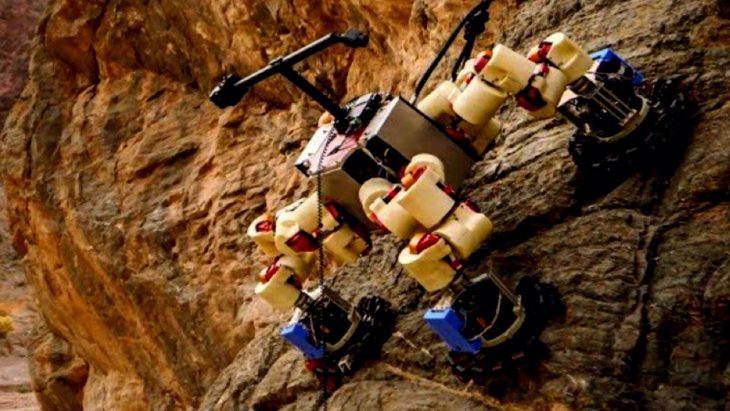The discovery of extraterrestrial life, a kind of holy grail in the scientific community, is not as simple as looking for little green dudes walking around with laser pistols. Instead, scientists have set their sights on discovering more subtle evidence of life. The key may lie in finding microscopic traces of life, or even just environments that could suggest the existence of life.
Mars is one promising target, and we have already sent several landers and rovers to search for evidence of life. But the planet’s barren surface may not be the best place to look. Instead, places that are shielded in the subsurface may prove to be our best bet at discovering well-preserved evidence of extraterrestrial life.
Caves are like nature’s time capsules – as long as they stand strong, their contents are protected from the elements and whims of time. Luckily, Mars is brimming with caves formed from thousand-year-old lava flows! Unfortunately for us, the caves are difficult to reach, and our current rovers can’t climb the walls of these caves and canyons.
To solve this problem, a team of scientists from NASA’s Jet Propulsion Laboratory and several other institutions created a four-legged “Limbed Excursion Mechanical Utility Robot”, simply known as LEMUR. LEMUR has grippers that are armed with hundreds of tiny, sharp hooks that enable it to climb rock walls and navigate lava caves. In theory, this would allow for exploration in areas that simply would not have been possible with the rovers that are currently exploring the Martian surface.
LEMUR is equipped with instruments designed to detect “biosignatures” of past or present life and determine whether a certain environment might be habitable. A set of cameras gives the robot guidance as it moves through a landscape, and it has the ability to find the potential of life based on the presence of these biosignatures. When analyzing a rock surface, its instruments allow LEMUR to find out what elements are present and determine the structure of molecules and the hydration state of minerals. These tools allow LEMUR to find clues for life such as water and organic compounds
To test how effective LEMUR could be, the researchers deployed the robot in various cave and canyon sites in New Mexico and California. Mock missions in Four Windows Cave, a lava cave in New Mexico’s El Malpais National Monument, demonstrated that LEMUR could successfully navigate and climb up vertical cave surfaces. Though it needed human intervention when it reached corners and ledges, LEMUR was impressively self-sufficient. LEMUR also demonstrated its ability to find signs of life on the walls of the cave. It determined the location of microscopic communities of organisms, took pictures, and identified elemental signatures, all while climbing on a vertical surface.
To give you an idea of just how speedy LEMUR is, when deployed on a granite outcrop, it climbed 4.2 meters in 7 hours. To put this into perspective, assuming snails move at around 1 millimeter per second, LEMUR is about seven times slower than a snail. So it’s not the fastest robot around, but that’s the price you have to pay for vertical movement!
LEMUR proved to be sufficiently independent during the test runs. Autonomy is important for rovers. Mars is really far away, so bandwidth and travel time can limit our ability to make the quick, on-site decisions needed to control rovers and collect adequate data. Armed with autonomy software, LEMUR was able to traverse and climb the walls of caves and canyons with minimal human intervention, and identify signs of life while doing it. This turned out to be significant. The signs of life observed at the test sites could not have been uncovered if the robot was limited to flat terrain.
The rover does struggle with significant changes in the terrain, such as large cracks or ledges. Code has not yet been written for such situations, so it’s only a matter of time until the LEMUR learns how to deal with those roadblocks as well.
The LEMUR is destined for more mock missions in the future. As it gets perfected bit by bit, scientists could gain access to space environments that were simply impossible to adequately explore in the past. If they remain undisturbed, caves on Earth do an excellent job of preserving evidence for past and present life. LEMUR looks like it will soon be able to explore similar environments on other planets. Considering how little we know about the mysteries of space, the potential of what we could find is near limitless.


